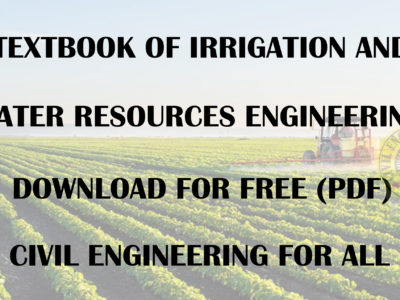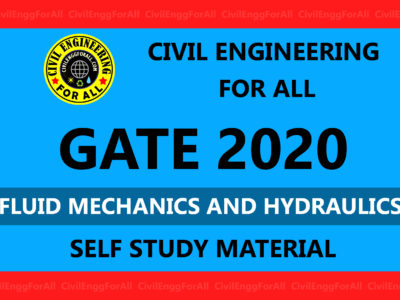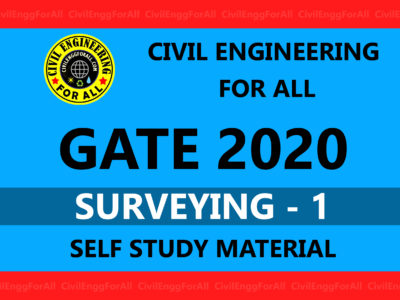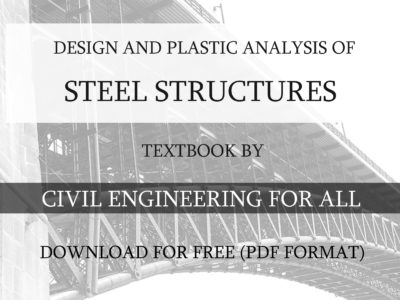
TOPICS COVERED
- Elements of dam engineering
- Embankment dam engineering
- Concrete dam engineering
- Dam outlet works
- Energy dissipation
- Gates and valves
- Dam safety – instrumentation and surveillance
- River engineering
- Diversion works
- Cross drainage and drop structures
- Inland waterways
- Hydroelectric power development
- Pumping stations
- Waves and offshore engineering
- Coastal engineering
- Models in hydraulic engineering
Structural philosophy and generic types of dams
The primary purpose of a dam may be defined as to provide for the safe retention and storage of water. As a corollary to this every dam must represent a design solution specific to its site circumstances. The design therefore also represents an optimum balance of local technical and economic considerations at the time of construction. Reservoirs are readily classified in accordance with their primary purpose, e.g. irrigation, water supply, hydroelectric power generation, river regulation, flood control, etc. Dams are of numerous types, and type classification is sometimes less clearly defined. An initial broad classification into two generic groups can be made in terms of the principal construction material employed.
- Embankment dams are constructed of earthfill and/or rockfill. Upstream and downstream face slopes are similar and of moderate angle, giving a wide section and a high construction volume relative to height.
- Concrete dams are constructed of mass concrete. Face slopes are dissimilar, generally steep downstream and near vertical upstream, and dams have relatively slender profiles dependent upon the type.
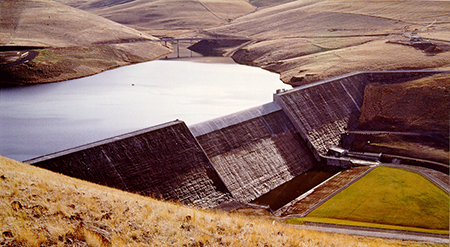
HYDROLOGY IES MASTER GATE MATERIAL : CLICK HERE
Dams: focus points
Dams differ from all other major civil engineering structures in a number of important regards:
- every dam, large or small, is quite unique; foundation geology, material characteristics, catchment flood hydrology etc. are each site specific.
- dams are required to function at or close to their design loading for extended periods.
- dams do not have a structural lifespan; they may, however, have a notional life for accounting purposes, or a functional lifespan dictated by reservoir sedimentation.
- the overwhelming majority of dams are of earthfill, constructed from a range of natural soils; these are the least consistent of construction materials.
- dam engineering draws together a range of disciplines, e.g. structural and fluid mechanics, geology and geotechnics, flood hydrology and hydraulics, to a quite unique degree.
- the engineering of dams is critically dependent upon the application of informed engineering judgement.
In summary, dam engineering is a distinctive, broadly based and specialist discipline. The dam engineer is required to synthesize design solutions which, without compromise on safety, represent the optimal balance between technical, economic and environmental considerations.
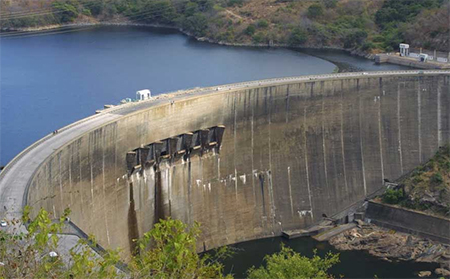
The principal variants of the modern concrete dam are defined below.
- Gravity dams : A concrete gravity dam is entirely dependent upon its own mass for stability. The gravity profile is essentially triangular, to ensure stability and to avoid overstressing of the dam or its foundation. Some gravity dams are gently curved in plan for aesthetic or other reasons, and without placing any reliance upon arch action for stability. Where a limited degree of arch action is deliberately introduced in design, allowing a rather slimmer profile, the term arched or arch-gravity dam may be employed.
- Buttress dams : In structural concept the buttress dam consists of a continuous upstream face supported at regular intervals by downstream buttresses. The solid head or massive buttress dam is the most prominent modern variant of the type, and may be considered for conceptual purposes as a lightened version of the gravity dam.
- Arch dams : The arch dam has a considerable upstream curvature. Structurally it functions primarily as a horizontal arch, transmitting the major portion of the water load to the abutments or valley sides rather than to the floor of the valley. A relatively simple arch, i.e. with horizontal curvature only and a constant upstream radius.
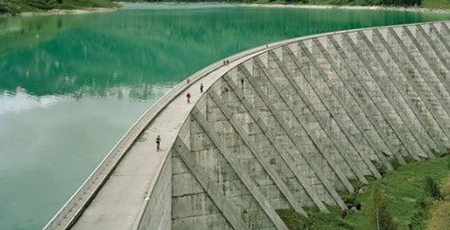
IRRIGATION ENGINEERING ACE GATE MATERIAL : CLICK HERE
Spillways
The purpose of the spillway is to pass flood water, and in particular the design flood, safely downstream when the reservoir is overflowing. It has two principal components: the controlling spillweir and the spillway channel, the purpose of the latter being to conduct flood flows safely downstream of the dam. The latter may incorporate a stilling basin or other energy-dissipating devices. The spillway capacity must safely accommodate the maximum design flood, the spillweir level dictating the maximum retention level of the dam, i.e. the normal maximum water level (NWL)
Spillways are normally uncontrolled, i.e. they function automatically as the water level rises above NWL, but they may be controlled by gates. In some instances additional emergency spillway capacity is provided by a fuse plug, i.e. an erodible subsidiary bank designed to wash out if a predetermined extreme flood level is attained. Alternative emergency provision can be made by reinforced concrete flap-gates designed to tip over by hydrostatic pressure under extreme flood conditions or by the use of crest-mounted fusegates. Concrete dams normally incorporate an overfall or crest spillway, but embankments generally require a separate side-channel or shaft spillway structure located adjacent to the dam.

Outlet works
Controlled outlet facilities are required to permit water to be drawn off as is operationally necessary. Provision must be made to accommodate the required penstocks and pipework with their associated control gates or valves. Such features are readily accommodated within a concrete dam. For embankment dams it is normal practice to provide an external control structure or valve tower, which may be quite separate from the dam, controlling entry to an outlet tunnel or culvert. A bottom discharge facility is provided in most dams to provide an additional measure of drawdown control and, where reasonable, to allow emptying of the reservoir. The bottom outlet must be of as high a capacity as economically feasible and consistent with the reservoir management plan. In most cases it is necessary to use special outlet valves and/or structures to avoid scouring and damage to the stream bed and banks downstream of the dam.
HYDRAULIC MACHINERY MADE EASY GATE NOTES : CLICK HERE
Cut-offs
Seepage under and round the flank of a dam must be controlled. This is achieved by the construction of a cut-off below the structure, continued as necessary on either flank. Modern embankment cut-offs are generally formed from wide trenches backfilled with rolled clay, if impervious strata lie at moderate depths, and/or by drilling and grouting to form a cut-off screen or barrier to greater depths. Grout screen cut-offs are also customarily formed in the rock foundation under a concrete dam.
Geological and geotechnical investigations
– Geological and geotechnical investigation of a dam site selected for detailed evaluation is directed to determination of geological structure, stratigraphy, faulting, foliation and jointing, and to establishing ground and groundwater conditions adjacent to the dam site, including the abutments. The general objectives of these and allied investigations are
– to determine engineering parameters which can reliably be used to evaluate stability of the dam foundation and, on compressible foundations, i.e. soils, to estimate probable settlement and deformation,
– the determination of seepage patterns and parameters enabling assessment of the probable seepage regime, including quantities and pressures, and
– to confirm the containment integrity of the reservoir basin and the stability of its margins. The relative importance of (a), (b) or (c) is dependent upon the site and the type of dam proposed. A fourth general objective is
– confirmation of the nature, suitability and availability of natural construction materials, including the determination of design parameters for fill materials etc.
HYDRAULIC STRUCTURES TEXTBOOK BY CIVILENGGFORALL
DOWNLOAD LINK : CLICK HERE
PASSWORD : CivilEnggForAll
OTHER USEFUL BOOKS
- RAJASTHAN STAFF SELECTION BOARD (RSSB) JUNIOR ENGINEER DIPLOMA CIVIL ENGINEERING EXAM 2022 – HINDI & ENGLISH MEDIUM SOLVED PAPER – FREE DOWNLOAD PDF (CivilEnggForAll.com)
- ISRO TECHNICAL ASSISTANT EXAM 2022 – CIVIL ENGINEERING – HINDI & ENGLISH MEDIUM – SOLVED PAPER – FREE DOWNLOAD PDF (CivilEnggForAll.com)
- MADHYA PRADESH PUBLIC SERVICE (MPPSC) COMMISSION – ASSISTANT ENGINEER EXAM – MPPSC AE 2021 CIVIL ENGINEERING – SOLVED PAPER WITH EXPLANATIONS – PDF FREE DOWNLOAD
- BIHAR PUBLIC SERVICE COMMISSION (BPSC) ASSISTANT ENGINEER EXAM – 2022 – CIVIL ENGINEERING – SOLVED PAPER – FREE DOWNLOAD PDF (CivilEnggForAll.com)
- ODISHA PUBLIC SERVICE COMMISSION – OPSC AEE PANCHAYATI RAJ EXAM 2021 – SOLVED PAPER WITH EXPLANATION – FREE DOWNLOAD PDF








